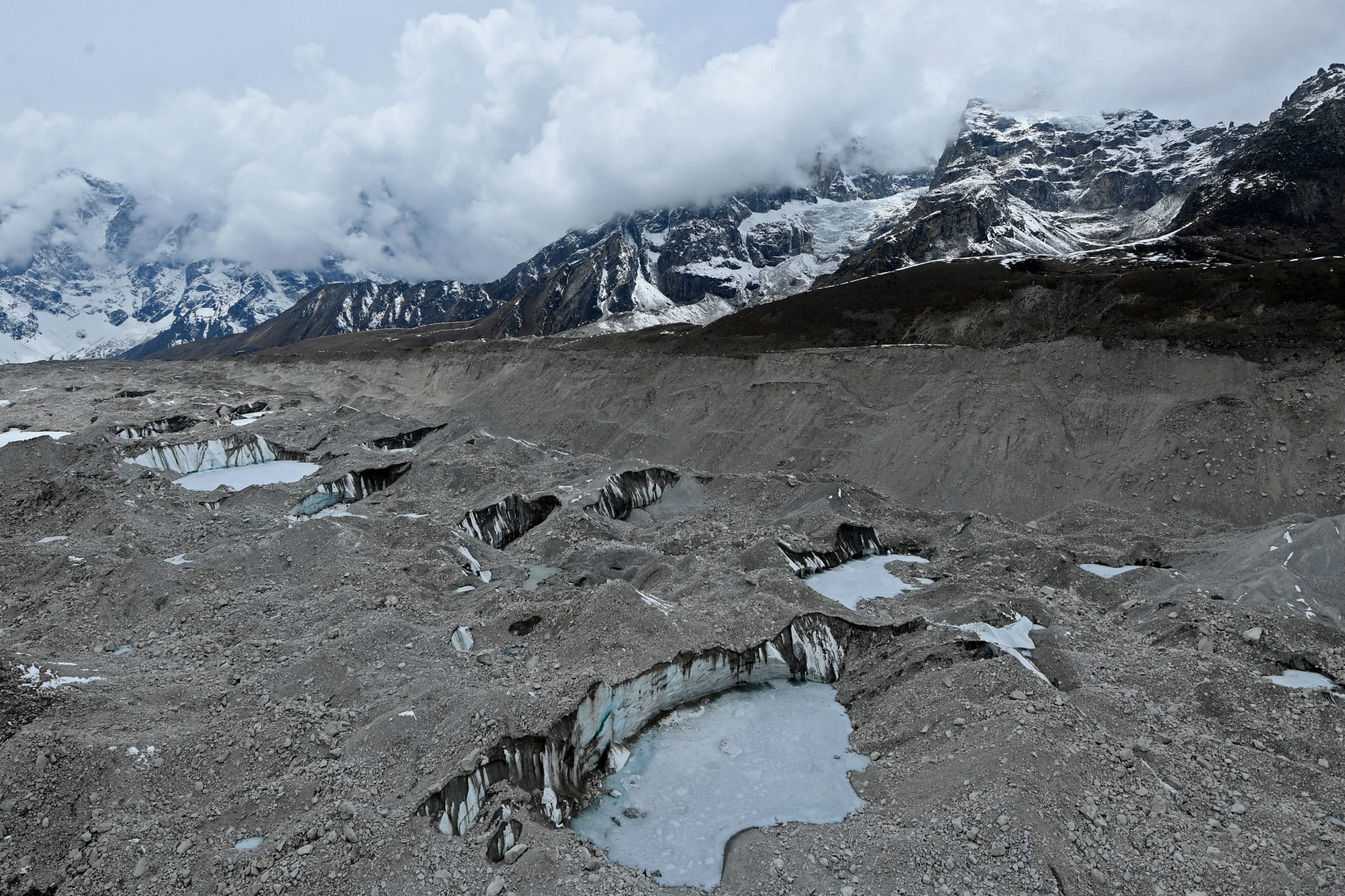Glaciers in the Himalayas, the massive mountain range that stretches across four Asian countries, are melting at a rapid rate causing researchers to warn of further losses and catastrophic effects.
The glacier ice loss in the Himalayas, which is known for Mount Everest and K2, has been particularly acute over the last several decades, according to the study published Monday in Scientific Reports. Glaciers have melted 10 times faster over the last four decades than they did in the seven centuries prior.
“By comparison to other world regions the magnitude of the acceleration in glacier mass loss across the Himalayan region is exceptional,” the study said. (RELATED: Antarctica Just Had Its Coldest Season Ever. Here’s Why)
The researchers noted, though, that they couldn’t say if climate change was to blame, instead pointing to “local topography and glaciological attributes” that promote melting. Still, they suggested that the study showed rapid changes that couldn’t be ignored.

The Khumbu glacier is pictured at the Mount Everest base camp in Solukhumbu, Nepal on May 3. (Prakash Mathema/AFP via Getty Images)
“This part of the world is changing faster than perhaps anybody realized,” Jonathan Carrivick, a glaciologist and co-author of a paper detailing the research, told The Wall Street Journal. “It’s not just that the Himalayas are changing really fast, it’s that they’re changing ever faster.”
The research could ultimately help inform future analyses that aim to tie historic glacier loss with “future mass loss under a warming climate,” the researchers wrote in the study.
But if the melting continues at its current rate, researchers warned that weather events such as avalanches and flooding could occur at a higher frequency in India, Nepal and Bhutan, the WSJ reported. Hundreds of millions of people in the surrounding areas could face agriculture disruptions as a result.
“There’s lots of different parts to sea level rise, but mountain glaciers historically and probably in the coming decades have been the most significant contributors,” Summer Rupper, a professor of geography at the University of Utah, told the WSJ.
All content created by the Daily Caller News Foundation, an independent and nonpartisan newswire service, is available without charge to any legitimate news publisher that can provide a large audience. All republished articles must include our logo, our reporter’s byline and their DCNF affiliation. For any questions about our guidelines or partnering with us, please contact licensing@dailycallernewsfoundation.org.


